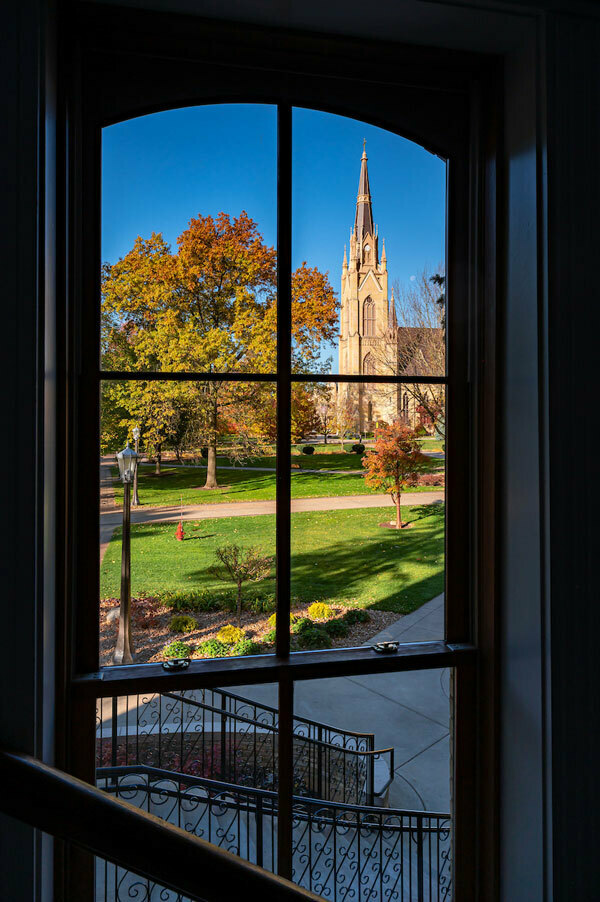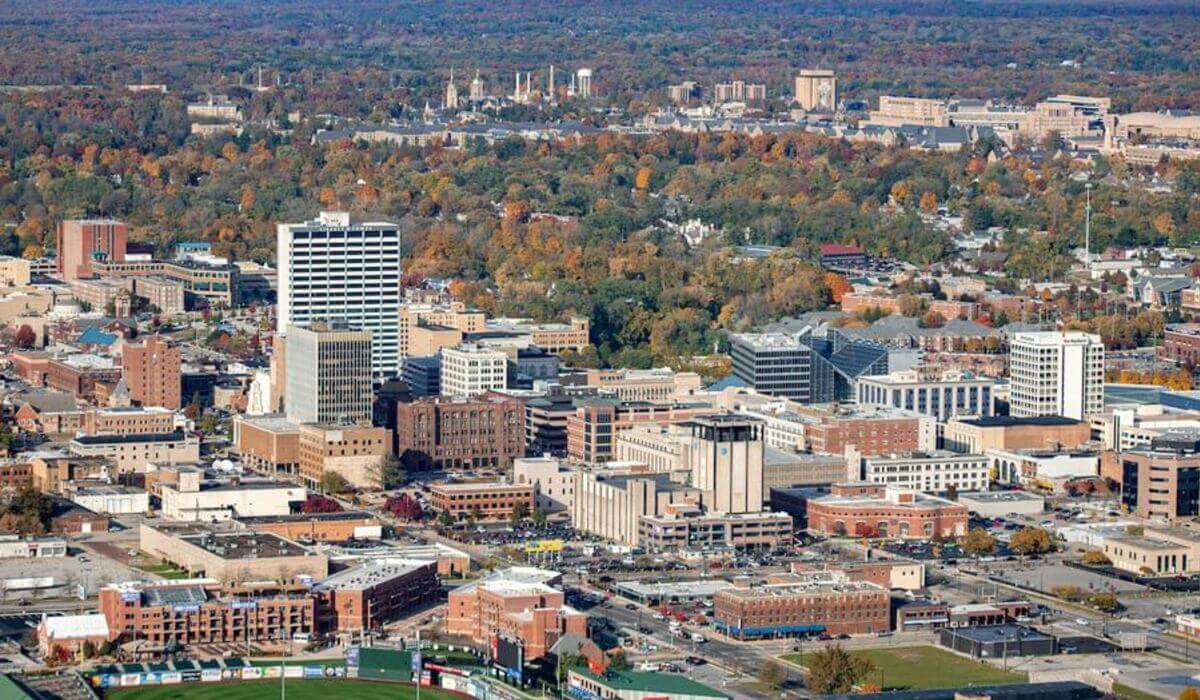- Home ›
- Notre Dame 2033: A Strategic Framework ›
- Part III. Opportunities and Challenges
Part III. Opportunities and Challenges

Challenges to fulfilling Notre Dame’s aspirations are not difficult to identify. But each challenge is also an opportunity.
-
Religious disaffiliation.
In the United States, religious affiliation is declining, especially among young people, and this is certainly true of Catholicism, although its adherents remain roughly 20 percent of the population. 32 Efforts to recruit mission-sympathetic faculty and students — where Notre Dame has been notably more intentional than its Catholic peers — are consequently more difficult. Few institutions are better positioned to understand disaffiliation and develop opportunities for young people to reconnect with their natal faith traditions. Campus Ministry, the McGrath Institute for Church Life, and faculty in multiple departments are working on these issues. 33 Notre Dame should provide leadership for the Church in this effort and, ideally, in reversing these patterns.
-
Athletics.
The athletics model of deep integration into the student body along with on-the-field competition at the highest level — upheld for decades by Notre Dame along with a small number of peer institutions — is under significant strain. At Notre Dame, the model is uncontroversial. Outside Notre Dame, traditional practices are being upended by relaxed transfer rules, name-image-likeness agreements, conference realignments (with more demanding travel schedules for student-athletes), and legislative attempts to classify student-athletes as employees. Though the current situation is challenging, Notre Dame has an opportunity to lead. If the tradition of college athletics centered on the education and well-being of student-athletes is to survive, Notre Dame must play a prominent role. 34 -
Public trust.
Public trust in colleges and universities in the United States has declined because of the steady growth in tuition charges, the mistaken perception that such universities no longer facilitate social mobility, and the sense that such universities are overly partisan. No single institution will recover the confidence placed in universities by the legislators and citizens of the immediate post–World War II era. But surveys suggest that Notre Dame is one of the country’s “most trusted” universities, in part because its Catholic mission allows it to transcend some of the country’s partisan divisions. 35 (At times, admittedly, divisions within the Church replicate partisan divisions. This, too, is present at Notre Dame.) Perhaps for the first time in its history, the University has both the opportunity and the reputation to convene and facilitate some of the conversations the country desperately needs.
-
Engagement with South Bend and the region.
This strategic framework is the first in Notre Dame’s history to use the words “South” “Bend” and “Indiana.” In the modern knowledge economy, the advancement of any global research university is wedded to the capacity of the surrounding community.
Among the AAU private universities, Notre Dame is located in the third-smallest economic market. South Bend was the 91st largest city in the United States in 1960; it is now the 318th. Acquisitions, largely by companies on either coast, have diminished the number of firms headquartered in and committed to the region. Only one public company is located in St. Joseph County. Given the modest number of professional positions in the region, the challenges of dual-career recruitment are perennial.
Happily, the region is on the rebound. The 2020 census revealed population growth after decades of decline. Links between the region and the University have deepened, too. Beginning in the 1980s and 1990s, Notre Dame began working with partners in the surrounding neighborhoods and the city to spur high-quality social services (such as the Center for the Homeless) and volunteer opportunities for students (often through the Center for Social Concerns). In 2001, the University founded the Robinson Community Learning Center, which offers a variety of programs aimed at enhancing the education of lifelong learners and K–12 students in South Bend.
These efforts were matched by new initiatives to welcome the community to the campus. The DeBartolo Performing Arts Center (2004) and the Compton Family Ice Arena (2011), both strategically located on the southern edge of campus, have enticed tens of thousands of local visitors. Soon, the Raclin Murphy Museum of Art will accelerate this traffic, sparking an array of cultural partnerships.
Amplifying these social service and cultural advances have been significant economic development programs. The most notable of these is the IDEA Center, founded in 2017 as Notre Dame’s effort to encourage entrepreneurship and stimulate the translation of foundational faculty research into thriving companies. The Lilly Endowment recently tapped Notre Dame as the lead partner for a $42 million grant aimed at developing partnerships between University faculty and local manufacturing firms. (No other leading university in the United States is located in a region so dependent upon manufacturing.) The Eddy Street and Northeast neighborhood developments, including $300 million in development and the construction of hundreds of apartments, condominiums, and single-family homes, have transformed a neighboring section of South Bend. Faculty at the School of Architecture are participating in civic efforts to build more stable neighborhoods and a more walkable urban core.
The promise of these efforts depends on building genuine partnerships with local governments, companies, schools, and other nonprofit organizations. It is now clearer than ever before that for Notre Dame to thrive, the South Bend region must also prosper. And a more prosperous South Bend strengthens Notre Dame.

Footnotes
32. ^ David Masci and Gregory A. Smith, “7 Facts about American Catholics,” Pew Research Center: Religion & Public Life, October 10, 2018. Accessed June 20, 2023.
33. ^ Christian Smith and Amy Adamczyk, Handing Down the Faith: How Parents Pass Their Religion on to the Next Generation (New York, 2021).
34. ^ Rev. John I. Jenkins, C.S.C., and Jack Swarbrick, “College Sports Are a Treasure. Don’t Turn Them into the Minor Leagues,” New York Times, March 23, 2023.
35. ^ Morning Consult, 2022 Most Trusted Universities, 2022. Accessed June 22, 2023.
Part III. Opportunities and Challenges